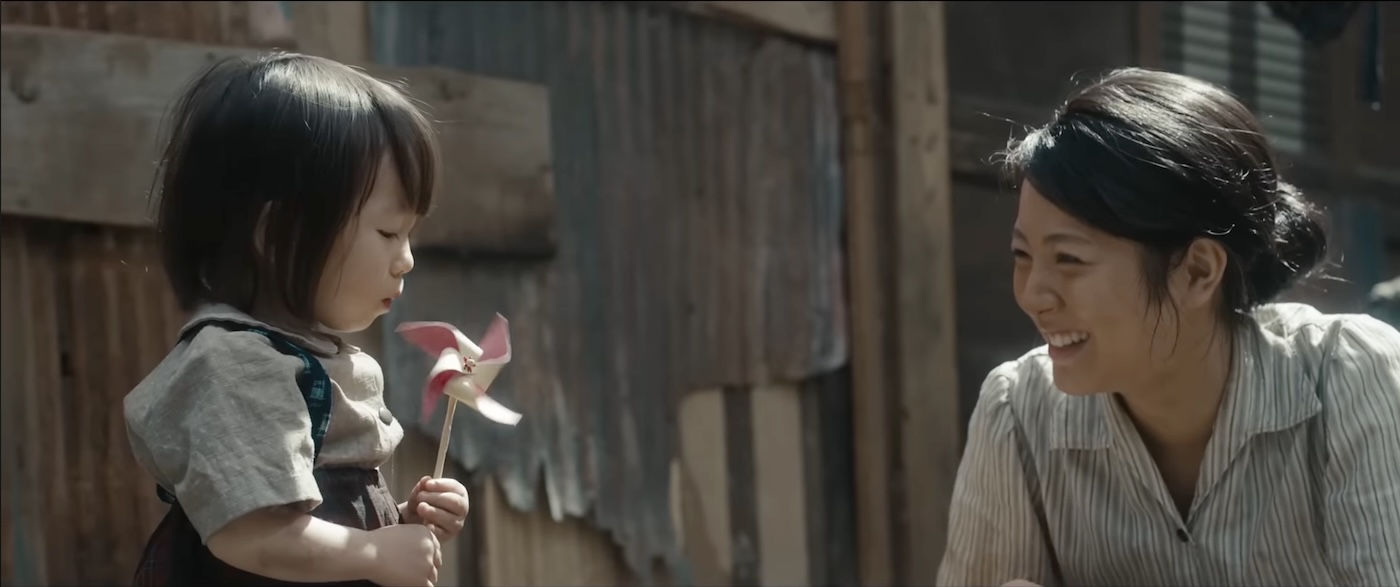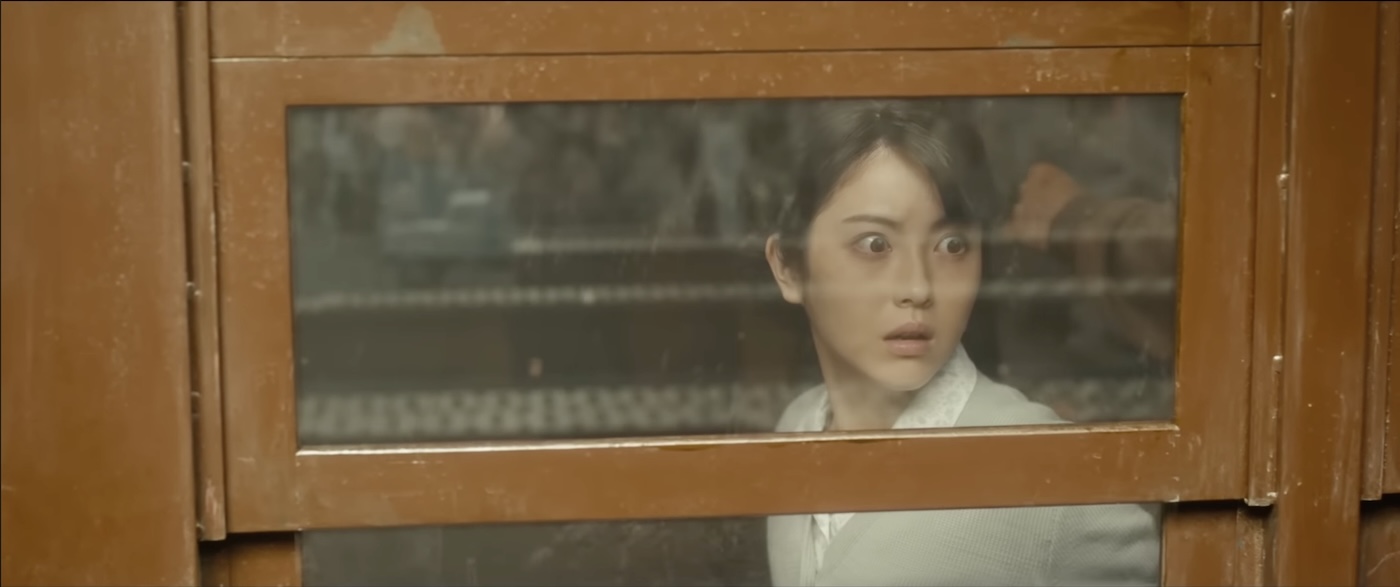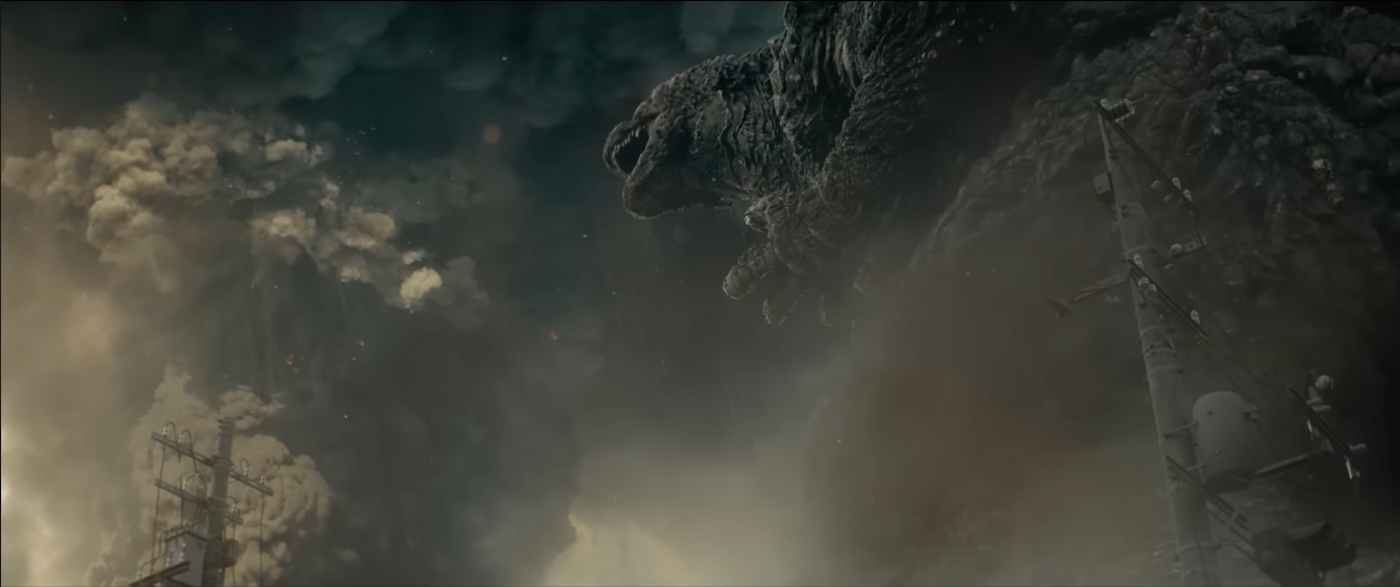An early draft of this brief review was originally published on December 21, 2023,
at Give Me Some Light on Substack, months before it appeared here.
Subscribe, and you’ll read many of these reviews while the films are still breaking news!
Based on what I’m hearing from Godzilla fans, and even from some who would call themselves “kaiju-indifferent,” Godzilla Minus One — the 37th filmic footprint in this monster’s cinematic history of destruction —feels more like Godzilla Scores 100. In fact, one of my good friends and fellow educators wrote to me, raving that it’s “one of the most powerful stories of grace and redemption I’ve ever seen.”

It’s December, and that means I’m prioritizing world-class cinema. This is the time of the year when the most celebrated films from recent film festivals are opening in America in hopes of scoring Oscar nominations, and I’m suddenly scrambling to keep up with the highly praised features screening in Seattle. It felt strange to choose a Godzilla movie — especially since I’ve seen very few of them. (I enjoyed 2014’s edition, directed by Gareth “Rogue One” Edwards — as you can see from my Letterboxd review.) Could this one be the second film in the tradition to overcome my skepticism?
Written and directed Takashi Yamazaki, who also oversaw special effects, Godzilla Minus One is remarkable in how it preserves what has always been the sturdiest elements of the franchise — scenes of metropolitan chaos, a monster who looks like a guy in a suit smashing up skyscrapers, a nation throwing the full weight of its military forces against the gargantuan threat, and a helluva lot of specifically Japanese post-WWII anguish. In doing so, it leans heavily on Steven Spielberg’s Jaws for inspiration, and a pivotal sequence riffs on Nolan’s Dunkirk without apology.

The human drama focuses on Kōichi Shikishima (Ryunosuke Kamiki), a kamikaze pilot who deserted at the end of the war when it was clear that Japan was losing. Hiding out on an island outpost under the pretense that his plane needs repair, Kōichi witnesses Godzilla rise from the sea and attack his outpost like the first wave of post-war shame. When the moment comes for him to try and save them, he falters. Thus, the table is set for his character arc: He will make it back to the mainland to learn that his parents are among the casualties of Tokyo bombings.
Overwhelmed by guilt and a drive to make up for his failures, he befriends a spirited young woman, Noriko Ōishi (Minami Hamabe). Noriko has been similarly orphaned, and they dedicate themselves to the care of an orphaned child, Akiko (Sae Nagatani).

Their new life as a family trying to rebuild in the ruins is short-lived. Kōichi will join Japanese forces who gather and scheme to face a new threat from Godzilla. The creature, growing exponentially as a result of U.S. atomic-bomb testing, is now threatening the mainland with new size and strength, ready to storm through a cityscape like the reptile version of a hurricane. What’s more, he has a new weapon: a heat ray reminiscent of the planet-killing power of the Death Star. Kōichi will feel compelled to defeat his shame by fighting the monster again, determined to hit his target this time.
I’ll admit it: I’m envious of audiences who love Godzilla movies. It’s such beautiful evidence of the power of art — even formulaic, crowd-pleasing entertainment — to create community and provide catharsis. I wish I felt that way about this particular tradition.

When I was a kid, the idea of Godzilla fascinated me because I was excited about dragons and monsters. But whenever I actually saw Godzilla scenes, I was disappointed. The monsters in the stories I loved had complex parts to play in those stories. Godzilla, by comparison, just walked out of the ocean, roared and smashed things, and then went back. He bored me. And the forgettable and often disposable human characters did not help matters. (For many of the same reasons, I never found professional wrestling the slightest bit interesting.)
The only director who has made me excited about a Godzilla movie is Gareth Edwards. In 2014, he took the Godzilla template as an opportunity to maximize mystery in plays of light and shadow. Even the trailer was visually enthralling. That movie was a perfect example of the Ebert principle: I was engaged not by (let’s all sing along) what the movie was about, but by how it was about it.

So many Godzilla connoisseurs are heralding this new one as “the greatest since the original” or “the greatest of all time.” And I’m sure they have good reasons for those claims. I gave my afternoon to this beast, and while I can acknowledge some impressive craftsmanship and some honest-to-goodness soul-searching—clearly, our storytellers are reflecting on ways in which the wartime Japanese government set a tone for the devaluing of human life across the culture—I cannot say that I found the human drama particularly compelling. In a genre like this, where characters are drawn cartoonishly, and where actors turn everything up to “11” as a rule—as if every scene must have a moment that is underlined, all-capped, yellow highlighted, and shouted hysterically—I find myself backing away. These characteristics aren’t unique to this film; they’re the Godzilla conventions. And fans love those conventions. I just happen to be allergic to them.

So, I showed up. I gave it my attention. I thought about Japanese wartime and post-war history. I puzzled over the “Hey, we can Dunkirk too!” scene. I acknowledged the focus on redemption and grace, even as I cringed that the conflict was resolved with violence rather than something more imaginative. I applauded, impressed, by some of the extravagant special effects. I saw all of the “surprises” coming as clearly as those sailors with binoculars saw Godzilla’s spines rising from the water in the distance. And I returned to my day without giving the movie much more thought.
I’m happy for everyone who enjoys it.

And here’s to the one of the four other people in my huge theater — specifically, the guy who didn’t turn his phone off. Surprise, surprise— it rang! But what’s remarkable was the timing: It happened smack in the middle of the long hold-your-breath silence at one of the film’s most climactic moments. And, I kid you not, it was the same old obnoxious ringtone that we once heard go off inside the belly of a Jurassic Park T-Rex. Come on, man. In this instance, I wish Godzilla could lurch out of the screen and swallow the phone, the person, and their squeaky Regal Cinemas recliner.